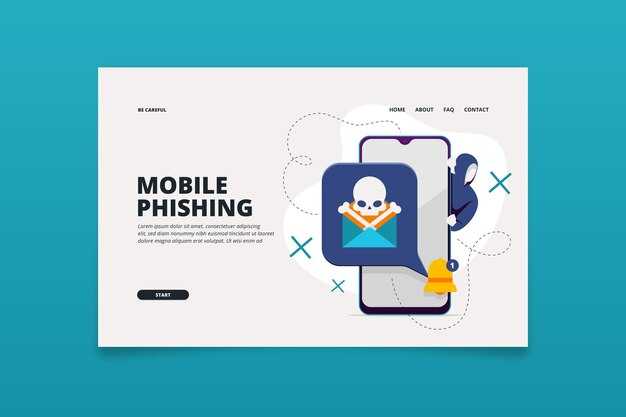clearly give yourself months to focus on your well-being and rebuild self-worth before dating again. This pause is a strategic move, not a setback, and it helps you identify type of connection that aligns with your values as you grow.
During this hiatus, engage with a counsellor to discussing goals and boundaries. Since you have begun this process, you can examine patterns, map out what you need, and anchor your well-being in concrete steps before you come back to dating.
Adopt a deliberate pace: schedule low-stakes social outings first, then gradually expand your dating circle. Track your energy and notice signs when the burn of stress appears, then pause to reset; what is known about your triggers can guide you as you test what feels right and protect your well-being.
Bring intentionality to each step: engage with new people at a pace that maintains intentionality and genuine connection. Not every date needs to lead to a relationship, but every interaction should reinforce your well-being and help you define the type of partnership you want as you grow. A perfect plan wont appear overnight, yet steady practice keeps you progressing.
Practical Steps to Start Dating After a Breakup
Clarify your dating intention in one sentence and align it with your current feelings: you want honest connections with those who share your preferences.
Set a practical plan: commit to building social momentum by scheduling two 20-minute chats this week and one in-person meeting every other week, then escalate only if you feel ready.
Protect your power by compartmentalizing emotions: keep new interactions light until you verify mutual respect and alignment with your values.
Create an exercises pack: three conversational exercises, five questions to explore intent, and a plan to move from chat to coffee in a smooth, low-pressure way–and apply it consistently so you can compare connections fairly.
Use these questions to understand reason and pace: What are you hoping to build along with a partner? How do you define commitment at this stage, and what pace feels right to you?
Keep disclosures simple and in a clear order: start with a bit about yourself, share your current situation, then discuss what you want next. If someone ghost you, you reset and move on without overthinking it.
Set boundaries that protect your time and energy: be honest about what you want, foster respect, and pivot if a date pushes beyond your comfort. Those who respect you respond with curiosity, not pressure.
Track wins and lessons regularly: note which conversations felt respectful, which sparked real interest, and which helped you learn about yourself. Allocate half of your attention to social encounters and half to reflection to keep balance.
источник: your own notes and reflections.
Set Clear Boundaries Before Dating
Define your boundaries in writing before you date again: write a short list of non-negotiables, the pace of contact you want, and topics you will avoid on early dates. This concrete step keeps you focused and helps you avoid drifting into conversations that reopen old wounds.
Set a daily reminder to review that list, so youre mindful when you start texting or meeting someone new. Decide on a response window (for example, you will answer within 24 hours) and stick to it, even if the other person asks for more frequent updates. Boundaries like these protect your personal space and your emotional energy.
Prepare a short, kind script for family input, especially if relatives pressure you, such as your brother-in-law asking about dating. You might say youre focusing on healing and not ready to discuss dating in detail. A clear line reduces misinterpretation and preserves relationships.
Because healing is personal, set topics that stay off the table until trust is established. Half of healing is shielding your personal space; choose pace and disclosure carefully. You will address questions that are significant to your situation only when you feel ready.
Use a guide you trust to evaluate new matches. Ask questions that reveal values, intentions, and limits. Write down those questions in advance so you can address them in early conversations, and avoid chasing answers that trigger negative thoughts.
If you feel overwhelmed, write the thought and remind yourself that progress over the years is real; this isnt a race. Respect their self-worth and your own, and protect their self-worth as you navigate new connections. If needed, talk to a counsellor; they can offer tools to maintain boundaries and will address patterns that show up after a breakup.
With these steps, you create a stable framework that supports your wellbeing and helps you move forward with clarity and confidence.
Define Your Relationship Goals Post-Breakup
Start by writing down three concrete relationship goals for the next four to six months and place them where you will see them each day. This creates clarity and reduces impulsive choices during dating after a breakup.
Align these goals with your core values and your personality. Identify non-negotiables (mutual respect, honesty, and consistent communication) and negotiables (dating pace, acceptable dating formats). Track progress with a simple checklist, a notes app, or a weekly reflection with a close friend.
Ask two practical questions to guide choices: What capacity do I have for dating right now? What kind of partner would support my growth and well-being? Document your answers and reflect on them every Sunday to adjust as needed.
During this period, lean on friends and personal interests to stay grounded and learn from past mistakes. Remember that care for yourself comes first, and that honest communication leads to healthier connections. If you decide to use dating apps, set boundaries and limit active options to a few evenings per week to preserve energy.
| Goal Area | Concrete Actions |
|---|---|
| Self-awareness | Journal daily for 5 minutes; review values weekly |
| Granice | Define texting limits, meeting rules, and privacy expectations |
| Dating pace | One first date per week; pause if red flags appear |
| Compatibility | Assess alignment with long-term plans; opt to pause if misaligned |
Rebuild Self-Care and Confidence
Begin with a 14-day self-care sprint: commit to a daily 15-minute movement block, 10 minutes of journaling, and a 5-minute check-in with a friend. Track progress in a simple series and mark each day you complete all three elements. This concrete routine yields steady mood lift and steadier responses to stress.
Label emotions as they arise: name them, rate intensity 1–10, record the trigger, and note what coping tactic you used and its outcome. Do this in a short 5-minute window each evening. This practice builds understanding of patterns and helps you respond rather than react during entering social situations again.
Define three core needs (safety, connection, autonomy) and map how your current schedule supports them. If a slot feels empty, adjust immediately: add a 20-minute solo activity for autonomy, or schedule a 30-minute call with a friend for connection. dont skip meals and keep regular sleep times to support emotional regulation. If you encounter a setback, handle it without self-blame.
Set boundaries on social media and dating apps: allocate a 30-minute window per day for scrolling; otherwise, log out. This reduces exposure to triggers and helps you look at your day with less noise. Build a buffer of 2–3 “alone time” blocks per week to recharge.
Invest in your friendships: reconnect with 2–3 core friends who mirror your values. Schedule weekly 45-minute calls or meetups; repeat for a month. Shared experiences boost mood and provide tangible support when experiencing rough emotions.
Seek professional guidance if stress persists: a licensed brenner therapist or other licensed professional can tailor exercises to your needs. A 45-minute session weekly for eight weeks often yields noticeable gains in self-talk, coping skills, and confidence.
Practice personal reflection: write one actionable takeaway each week from your self-care routine and implement it in the following week. Reflect on what this tells you about your needs and patterns. Use a small log to track progress and celebrate non-scale wins, like better sleep or calmer mornings. Personal growth comes from consistent small steps, not dramatic overhauls.
When considering dating again, enter scenes with a clear set of needs and boundaries, and avoid rushing into anything closer to marriage until you feel grounded. Reintroduce dating with slow pace: one date every two weeks, ask about values, and observe emotional cues. Keep the focus on self-respect and realistic expectations.
Regularly reassess your progress: a brief 10-question check every four weeks helps you see what works. Track changes in self-esteem, energy level, and willingness to engage in new friendships after a breakup. Use that feedback to adjust the next series of actions and keep momentum without overwhelming yourself.
Plan Low-Risk First Dates and Safe Boundaries
Begin with a 60-minute coffee or park-side walk in a public place. Entering dating after a breakup calls for a low-risk approach, because you want to guard your emotional energy and recovery. Keep the plan concrete: a single venue, a set end time, and an easy exit signal if you feel off. This refreshing structure reduces confusion and helps you observe your feeling, move at a pace that feels naturally comfortable for yourself. Notice your feeling as it shifts to guide the next steps.
Address boundaries clearly before the date: topics you won’t discuss, how long you’ll stay, and a simple exit cue if you feel overwhelmed. Keep these limits consistent across encounters so you can measure what works. When you’re dating others, it’s fair to state your expectations and listen for respect, because mutual respect supports emotionally safe connections.
Prefer daytime, short outings that allow easy exits: coffee, a 30-60 minute walk, or a museum with a couple of exhibits. Craft the plan collaboratively, but leave room to adjust if signals arise. Naturally, gauge vibe by body language and conversation pace, like whether you’re both smiling and maintaining eye contact.
Personally, decide each step with your wellbeing in mind: choose topics that keep things light, avoid heavy disclosures, and set a soft boundary on time. If a question feels too personal, redirect to something neutral, like hobbies or travel plans. This consistent approach helps you address confusion and prevents over-sharing, because you want to protect your energy while you’re in recovery.
Afterward, note what felt refreshing and what triggered confusion. Record a quick line for yourself: did you move toward or away from emotional cues? Use that data to adjust decisions for next time. If you want a similar vibe, you can repeat a short format; if not, honor jomo and choose someone who aligns with your boundaries. This approach supports consistent recovery and keeps you entering future dates with clarity.
Communicate Your Timing and Availability to New Partners
State your dating pace clearly in the opening message: one date per week maximum, with a defined time window you can meet (weeknights after 7 pm or weekend mornings).
expressing your current status helps prevent misreadings: transitioning from a breakup, rediscovering what you want, having space to think. If you didnt feel ready at first, you can take a pause and adjust without losing momentum. This approach also communicates you are doing the inner work and not rushing into someone new.
- Define a concrete schedule: specify days and times (for example, Fridays after 7 pm or Saturdays 9–11 am), and a maximum frequency–one date per week. This means what you say matters and reduces guessing. mean by clear timing so both sides stay aligned.
- Use a simple channel plan: online dating for screening, followed by a short call to gauge compatibility. call
- Set a boundary around pace: if a match presses for faster progression, doesnt align with your plan, and you can pause or adjust. pause
- Provide a brief reason when asked; you can say you are in a transition and rediscovering what you want. This allows someone to understand your tempo without probing into personal details. someone
- Prepare templates you can reuse: “I’m in a transition and need to date at a slower pace–one date per week. If that works, we can plan a short call and see how it goes.” This is a version of your dating stance you can tune over time. also
- Maintain energy after each date with a quick note to yourself about what you learned and whether you want to continue, which keeps you in control of the moment. doing
- Address family or acquaintances: if a relative asks about your dating life (brother-in-law, for example), steer the conversation to timing and boundaries rather than personal details. brother-in-law
techniques series of messages can help you stay consistent. You can combine these with a “short call” approach to avoid feeling overwhelmed. This version of your dating stance respects your recovery–it took time to develop, and it honors your boundaries without rushing. The power is in saying no without guilt and yes with intention, at the right moment. moment
источник: sullivan-windt

 Tips for a Smooth Transition – Dating After a Breakup">
Tips for a Smooth Transition – Dating After a Breakup">


 How to Be Happy Again – 14 Practical Tips to Reclaim Joy">
How to Be Happy Again – 14 Practical Tips to Reclaim Joy">
 Randki bez stresu – przestań uzależniać swoją wartość od relacji | Elizabeth Stone">
Randki bez stresu – przestań uzależniać swoją wartość od relacji | Elizabeth Stone">
 Spotting a Catfish – How to Avoid Getting Hooked by Fake Online Profiles">
Spotting a Catfish – How to Avoid Getting Hooked by Fake Online Profiles">